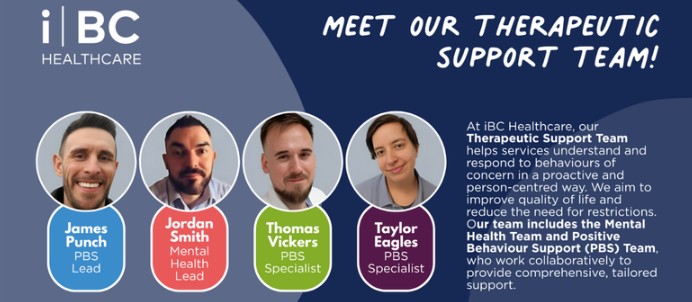Shining a light on Innovation:
Putting Person-Centred Care at the Heart of High-Risk Support
At Aspen House, a recent high-risk panel meeting highlighted a truly innovative approach to assessment, led by Dr James Punch. The focus was on a young person with a complex history, being considered for supported living. The assessment process broke new ground, blending empathy, creativity, and practical engagement to build a holistic understanding of T’s needs and strengths.
Breaking the Mould: Activity-Based, Person-Centred Assessment
Instead of relying solely on paperwork and reports, Our PBS Lead Dr James Punch took a hands-on, person-centred approach. He spent significant time with the young person, engaging in activities that matched their interests—such as sparring, kickboxing, dancing, and karaoke. Dr James Punch (who runs a martial arts group for adults with complex needs), took his sparring gear and years of training with him to the hospital T is currently supported in and created an environment that engaged T whilst they talked about his wants and needs. This not only helped build rapport but also allowed James to observe their behaviour, energy levels, and social interactions in real time.
James observed, “He needs to be kept busy and active… lots of walking, lots of gym, lots of kickboxing, lots of dancing and karaoke, which are his favourite things. He needs staff who are doing that with him.” This insight led to the recommendation that staff teams should be energetic, proactive, and willing to participate in activities alongside the young person, ensuring both engagement and risk mitigation.
Professional Feedback: “Epitomised Person-Centred Care”
The impact of this approach was powerfully captured by a learning disability nurse (RNLD) working with the young person, who attended the assessment and shared the following feedback:
“I found that the assessment James carried out this morning completely epitomised person centred care, and honestly I was amazed by the energy James brought. He used his knowledge of his passions and interests to engage him, and truthfully, in the year I have worked alongside this young person I have never seen anyone be able to sustain interest and focus in the way that James did. James was strong and boundaried, whilst being compassionate and approachable – a balance that can be difficult, but the exact approach that works fantastically for him. As a learning disability nurse, we’re taught to think outside of the box, this assessment did exactly that. It was innovative, exciting and most importantly completely shaped around the person being assessed. I liked that the assessment felt informal, but James used discrete approaches to gain vital information and test reactions to build up a true picture of who he is. Coming away from the assessment James’s analysis of him was 100% spot on, and he managed to do this and see him for the young man he is in such a short space of time. I’m aware that this is the first time you have done an assessment like this, however I would strongly encourage you to continue, I found it inspiring.”
This endorsement highlights not only the effectiveness of the approach but also its inspirational impact on other professionals.

Addressing Challenges and Ensuring Best Practice
The nurse also provided constructive feedback, noting that some staff initially questioned the appropriateness of the interaction, however, the RNLD was able to explain the rationale and shift their perspective, emphasising the importance of documentation and management approval for innovative approaches:
‘’Unfortunately in this industry safeguarding and restrictions are often more highly considered than what is best for the patient.”
This honest reflection underscores the need for clear communication and organisational support when pioneering new methods.
A Brighter Future for T
Perhaps most importantly, the RNLD shared the positive impact on T himself:
“I just want to thank you again, even if the placement is not sourced with yourselves T thoroughly enjoyed the assessment and it is the brightest I have seen him in a long time. It’s made me really hopeful for his future.”
Conclusion: Setting a New Standard
This assessment stands out as a model of innovation in high-risk care. By combining activity-based observation, trauma-informed practice, and collaborative planning, James Punch and the team demonstrated how creative, person-centred techniques can lead to better outcomes for individuals with complex needs. Their work not only supports T’s successful transition but also sets a new standard for assessments in supported living environments.
“I am incredibly proud to see our team leading the way with such innovative assessment techniques. The approach demonstrated by Dr James Punch truly puts the individual at the heart of our work, ensuring that every person’s strengths, interests, and aspirations are recognised and celebrated. Being at the forefront of this kind of person-centred innovation is exactly what sets our services apart, and I am delighted to see the positive impact it has on those we support and the professionals we work alongside.”
Jenny Payne
📩 Contact Us
For media enquiries, further information, or to speak to our team about this story:
iBC Healthcare Communications Team
✉️ Email: info@ibchealthcare.co.uk
📞 Phone: 0116 123 4567
🌐 Website: www.ibchealthcare.co.uk
We’d love to hear from you — whether it’s to learn more about our services, make a referral or discuss partnership opportunities.
#DoAmazingEveryday